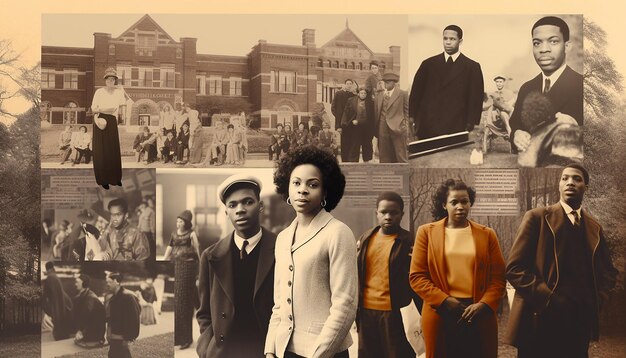Critical Race Theory: Social Justice Debates in 2025

Critical Race Theory (CRT) continues to be a significant framework in shaping social justice debates in 2025, influencing discussions on systemic racism, equality, and legal reforms in the United States.
The landscape of social justice in the United States is constantly evolving, and in 2025, **Critical Race Theory (CRT)** remains a central, albeit controversial, framework for understanding and addressing systemic inequalities. This article explores the current role of CRT, its applications, and its impact on ongoing social justice debates.
Understanding Critical Race Theory in 2025
Critical Race Theory, which originated in the 1970s and 1980s, examines how race and racism have shaped legal systems and societal structures in the United States. In 2025, understanding CRT’s core tenets is essential to navigating the complexities of social justice debates.
Core Principles of CRT
CRT is built upon several key principles that guide its analysis of race and power. These principles highlight the systemic nature of racism and its pervasive influence on society.
- Racism is systemic: CRT asserts that racism is not merely individual prejudice but is embedded in institutions and policies.
- Intersectionality: CRT recognizes that race intersects with other identities, such as gender, class, and sexual orientation, creating unique experiences of oppression.
- Narrative and perspective: CRT values the lived experiences and perspectives of people of color, challenging dominant narratives that often marginalize their voices.
By understanding these principles, individuals can gain a deeper appreciation for the complexities of racial inequality and the need for systemic change.

The Ongoing Debate Around CRT: Key Arguments
The application of Critical Race Theory in education and public policy has sparked significant debate. Understanding the different arguments is crucial for informed discussion and progress.
Arguments in Favor of CRT
Supporters of CRT argue that it provides essential tools for understanding and dismantling systemic racism, leading to meaningful social change.
- Promoting awareness: CRT can raise awareness of the systemic nature of racism, encouraging students and policymakers to critically examine existing structures.
- Informing policy: By highlighting racial disparities, CRT can inform the development of policies that address inequalities and promote equity.
- Empowering marginalized voices: CRT provides a platform for marginalized communities to share their experiences and challenge dominant narratives.
Arguments Against CRT
Critics of CRT argue that it promotes division and resentment, and that it overemphasizes race at the expense of other factors. Some also argue that it is a form of indoctrination.
- Divisiveness: Some critics argue that CRT can foster division and resentment by focusing on historical grievances.
- Overemphasis on race: Others argue that CRT overemphasizes race and ignores other factors, such as class and individual responsibility.
- Indoctrination: Some claim that CRT is a form of indoctrination that promotes a specific political agenda.
These arguments highlight the complexity and controversy surrounding CRT’s role in contemporary society.
CRT in Education: Curriculum Changes and Challenges
One of the most contentious areas of debate is the inclusion of CRT in educational curricula. As of 2025, many school districts are grappling with how to address issues of race and inequality in the classroom.
Implementation in Schools
The implementation of CRT in schools varies widely, from incorporating diverse perspectives into history textbooks to training teachers on culturally responsive pedagogy. Understanding these diverse approaches is critical for navigating this sensitive area.
Challenges and Controversies
The inclusion of CRT in schools has faced significant pushback from parents, policymakers, and community members, leading to heated debates and policy changes.
These challenges underscore the deep divisions and strong emotions surrounding the discussion of race and inequality in education.

The Impact of CRT on Legal and Policy Reform
Critical Race Theory has also influenced legal and policy reform efforts, particularly in areas such as criminal justice, housing, and employment. As of 2025, its impact is visible in ongoing debates.
Criminal Justice Reform
CRT’s insights into systemic racism have informed discussions on criminal justice reform, highlighting issues such as racial profiling, sentencing disparities, and police brutality.
By connecting CRT with practical policy changes, advocates aim to address racial inequalities within the justice system.
Housing and Employment
CRT has also shed light on housing discrimination and employment practices that perpetuate racial inequality. In 2025, its influence remains relevant in policy discussions.
CRT’s influence extends beyond academia, informing practical steps to dismantle systemic barriers to equity.
CRT and Social Justice Movements in 2025
Social justice movements like Black Lives Matter have drawn heavily on CRT principles to advocate for racial equality and systemic change. In 2025, the synergy between CRT and activism continues to drive progress.
Black Lives Matter and CRT
The Black Lives Matter movement has amplified CRT’s message, raising awareness of systemic racism and police brutality, demanding accountability and reform.
- Systemic racism: BLM emphasizes that racism is not isolated but is embedded in institutions and policies.
- Advocacy: BLM advocates for policy changes that address racial inequalities, such as police reform, voting rights, and economic justice.
- Grassroots activism: BLM mobilizes grassroots activism and community organizing to demand systemic change.
Other Social Justice Movements
CRT principles are also relevant to other social justice movements, such as those focused on immigration, LGBTQ+ rights, and environmental justice, to connect struggles and foster intersectional solidarity.
This synergy illustrates the importance of CRT in understanding and addressing diverse forms of inequality.
The Future of CRT: Challenges and Opportunities
Looking ahead, the future of Critical Race Theory is subject to various challenges and opportunities as society grapples with issues of race and equality. In 2025, understanding these trends is essential for informed engagement.
Challenges Ahead
CRT faces ongoing challenges from political opposition, misinformation campaigns, and legal restrictions. Overcoming these challenges will require collaboration and activism from advocates.
Opportunities for Growth
Despite these challenges, CRT also has opportunities to grow and evolve, such as expanding its reach to new audiences, engaging in interdisciplinary collaborations, and promoting innovative solutions to racial inequalities.
| Key Point | Brief Description |
|---|---|
| 📚 CRT Principles | Systemic racism, intersectionality, narrative perspectives |
| 🏛️ Legal Impact | Informs criminal justice & housing reform |
| ✊ BLM | Amplifies CRT, pushing for systemic change |
| 🍎 Education | Curriculum changes face challenges & debates |
Frequently Asked Questions
▼
Critical Race Theory (CRT) is a legal and academic framework that examines how race and racism have shaped legal systems and societal structures in the United States. It originated in the 1970s and 1980s.
▼
The core principles of CRT include the idea that racism is systemic and not merely individual prejudice, the concept of intersectionality, and valuing the lived experiences and perspectives of people of color.
▼
Arguments in favor of CRT in schools include promoting awareness of systemic racism, informing policy development, and empowering marginalized voices by giving them a platform to share their experiences.
▼
Criticisms of CRT include claims that it promotes divisiveness and resentment and that it overemphasizes race at the expense of other factors, such as class and individual responsibility.
▼
CRT has influenced legal and policy reform efforts, particularly in areas such as criminal justice, housing, and employment, by highlighting systemic racial disparities and informing policies to address these inequalities.
Conclusion
In 2025, **Critical Race Theory** continues to be a vital framework for grasping systemic inequalities and nurturing vital social justice debates. CRT is very important in understanding the complex landscape of social justice in the United States.





